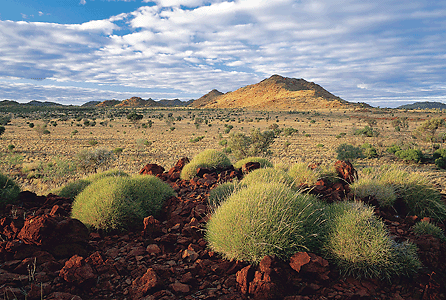2013–Australia’s Hottest Year Ever
January 7, 2014
Australia experienced its hottest year on record in 2013, Australia’s Bureau of Meteorology reported at the beginning of the year. Temperatures were 2.16 degrees Fahrenheit (1.2 degrees Celsius) above the long-term average, the warmest year since record keeping was begun in Australia in 1910. The world’s driest continent also had its hottest day, hottest month, hottest winter’s day, and hottest summer in 2013. The record-warm winter culminated in a series of devastating fires in and around Sydney, Australia’s largest city. The hotter-than-normal temperatures, which began late in 2012, were so extreme that the Bureau of Meteorology was forced to change its official weather forecasting map to include two new colors—deep purple and pink—to show areas with temperatures above 122 °F (50 °C).
According to the bureau, all but one of the last 10 years have been warmer than average. “The Australian region warming is very similar to that seen at the global scale, and the past year emphasizes that the warming trend continues,” concluded the authors of the bureau’s annual report. “Most of the warming has occurred since around 1950, and that’s consistent with the global pattern,” bureau meteorologist Neil Plummer stated in an Australian Broadcasting Company interview. He noted that figures from the Australian bureau, and other bureaus around the word, provide a “body of evidence that we’re all seeing a warming over Australia and a warming world.”

Australia is the driest continent. Its vast interior, often called the outback, consists mainly of deserts, such as the Great Victoria Desert (above), and dry grasslands. (© Peter Mead, Tom Stack & Associates)
Concurrently, a study by Australian scientists published in the journal Nature found that increasing levels of carbon dioxide are reducing the thickness of clouds over the oceans, which will, in turn, reduce their cooling impact. The scientists predicted that this effect will cause global temperature to rise by at least 5.6 degrees Fahrenheit (3 degrees Celsius) by the end of this century–shockingly higher than an earlier calculation of 2.7 degrees Fahrenheit (1.5 degrees Celsius).
Additional World Book articles:
- Bushfires in Australia
- Australia 2009 (a Back in Time article)
- Global warming 2012 (a Back in Time article)
- The Great Meltdown (a special report)
- Meltdown: Climate Change in the Arctic (a special report)


